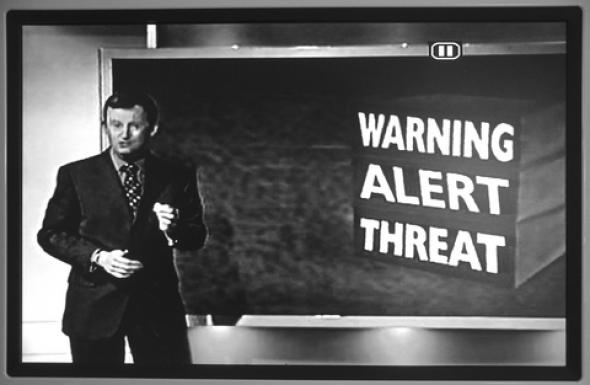The Sleep of Realism Produces Monsters
Giving a critical survey of the documentaries of Adam Curtis, Andrew Fisher evaluates the claims to realism and political neutrality made for his work, using the critical methodologies of Guy Debord and Georg Lukács
My job is not to try to change the world, but to describe it.i
Working at the BBC since the late 1980s, Adam Curtis has become one of the most celebrated contemporary British documentary film-makers. He is routinely fêted as the author of ambitious films that offer self-consciously provocative viewpoints on contemporary social and political issues. Since 2001, he has made three television series - The Century of the Self (2002), The Power of Nightmares (2004) and The Trap: What Happened to Our Dream of Freedom (2007) - each of which outlines a lengthy and generalised account of ideas, individuals or elites understood to have had a formative impact on the present.ii Together, these films attempt to understand the present, but what understanding they offer remains politically ambiguous and thus demands critical analysis, not least because it is riven by a tension between the films' emphatic claim to realism and their play on the spectacular form of mass media.
Curtis views history as a ‘series of unintended consequences resulting from confused actions', in which context things never work out as intended.iii The idea of historical narrative he derives from this is defined in opposition to the notion of ‘balance' that characterises the institutional framing of journalism (especially at his place of work, the BBC), namely the injunction that one must show ‘both sides' of a story.iv This idea of balanced representation tends, in Curtis' view, to frame events in a formal symmetry that all too easily prefigures and restricts the bases upon which critical judgements about them might be made. His response to this conventionalised medi- ation of history is to knock it off balance, to narrate it polemically and in slanted terms.
The Century of the Self charts the influence of Freud's discovery that irrational forces are at work in the human psyche and seeks to demonstrate how, as Curtis frames it, ‘those in power used Freud's theories to try to control the dangerous crowd in an era of mass democracy.' The series gives a reductive account of Freudian psychoanalysis, as imported to America by Freud's nephew Edward Bernays, marketing entrepreneur and apparent inventor of public relations. An often entertaining narrative of the rise and fall of the influence of psychoanalysis in America ends with an account of its collapse into irrationally determined individualism in the '60s, and the rest of the series charts the apparently more ‘scientific' (and objectifying) measures of behaviour that emerged from corporate attempts to turn the newly minted individuals of the post '60s period into newly active consumers. A key figure of this relation is Werner Erhard - author of ‘Erhard Seminars Training' (EST) - the promoter of a nigh-on total rejection of the social in favour of a selfish fantasy about the ‘redemptive' personal possibilities of radical self-interest. It is with a critically framed account of the intimate relation between the apparent opposites of cynical self-interest and objectifying behavioural measurement that the series concludes.
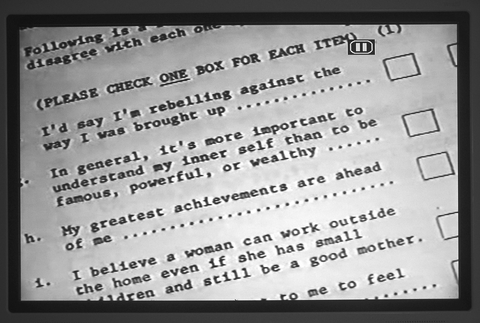
Image: Still from The Century of the Self, 2002
In The Power of Nightmares (the most interesting of these series), Curtis traces ideas that have informed neoconservatism and radical Islamism in order to speculate on their co-dependence. The intellectual roots of these movements are found in a shared distaste for western liberalism that he reads out of the writings of the Chicago philosopher Leo Strauss and the Egyptian revolutionary Sayyid Qutb.
For Curtis, these two embody broad trajectories inspired by the sense that liberal individualism threatens moral decrepitude and promises social chaos. Out of this linkage emerges a tale of how American and British governments and politically revolutionary Islam ended up on opposing sides of a world-encompassing imaginary sphere, polarised by a cynical and shared commitment to the myth of an ‘evil other' that defines one's own values as good and one's acts as right. This quite familiar way of thinking about America, in particular, is given a controversial twist as Curtis takes his narrative about the fantasies of fear that characterise the War on Terror to call into question some of its central figures, such as the actual existence of al-Qaida, Osama bin Laden's role as its leader, and the reality of the danger presented by ‘dirty bombs'. His claim is that these evils have been made up, constituted in exaggerated form through the uneasy and ambiguous mediation of actuality as a media spectacle oriented to produce fear and to sustain it in the interests of social control.
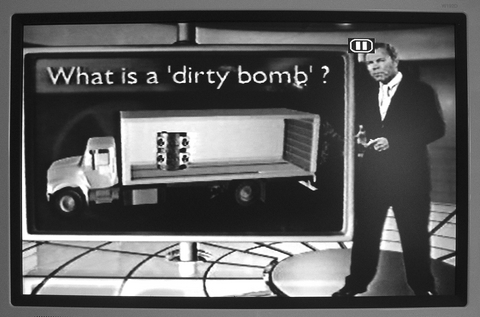
Image: Still from The Power of Nightmares, 2004
These documentaries are best understood in terms of the tension they foreground between a realism that seeks to excavate the significance of individuals (e.g. Bernays) and ideas (e.g. the myth of the evil other), and the strategic play on the spectacular form of the media through which these facts are presented. Whilst it is not, I suspect, a description with which Curtis would readily concur, his films take up, mix and concentrate Lukácsian themes (the power of literary realism and the prevalence of reification) and the influence of the Situationist International (reification accelerated in the spectacular form of the commodity image and the possibility this holds out for its critical détournement).
In light of this, it's worth dwelling on the formal character of his narratives. Each film is structured by a text written and spoken by Curtis over montaged sequences of images drawn from various archival sources. By a number of means, these foreground the fact that what one is seeing has already been subject to mediation (such as in his repetition of a questionable cinematic image of an Arab magician in The Power of Nightmares). Montaged archival material is contrasted to interviews conducted by Curtis and filmed using available light and limited sound equipment in a way that makes what the interviewees say seem unmediated. All of this is set to often ironically counterpoised music (as in one sequence from The Trap in which the title ‘F**k you Buddy' is screened over a clip of a singing, stars-and-stripes bedecked Bing Crosby). These forms of layered juxtaposition and different stylistic approaches to more or less obvious forms of mediation stress a self-conscious display of the fragmentary and polysemic character of narrative constructions. However, the range of possible associations projected by particular juxtapositions tends to be closed off by the neatness and the directive character of his voiceovers. In this sense, Curtis' practice bears comparison to Guy Debord's film The Society of the Spectacle and the similar way it frames archive images and music with a polemical narrative. For Debord, however, such culturally reflexive strategies ought to aim at a targeted political critique. This is what, in his view, gives polemical appropriation, montage and repetition meaning as strategic modes of opposition to the spectacular form of the commodified image. For Debord, this holds out the promise of a cultural practice that is something more than a self-conscious inflection of the commodity form. Crucially, in a society for which ‘all that was once directly lived has become mere representation', the détournement (appropriation and re-functioning) of conventionalised culture has to risk ‘speaking the language' of spectacle in order to render its dubious certainties uncertain and its apparent necessities contingent.v Whilst Curtis' films are, perhaps indirectly, indebted to The Society of the Spectacle, they clearly do not share in Debord's understanding of the political imperatives informing such strategies. Curtis trades, sometimes skilfully, on the sense in which the situationist idea of the spectacle has tended to be politically denatured by those who embrace it as a description of contemporary culture.
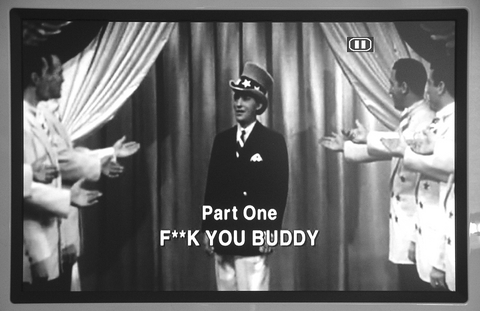
Image: Still from The Trap: What Happened to Our Dream of Freedom, 2007
The polemical confidence of Curtis' narratives (there's no question mark in the title of The Trap: What Happened to Our Dream of Freedom) serves to establish his films' attempt at realism. He frequently relates them to 19th century literary realism, as in the following:
You look at Bleak House, say, and Dickens throws 10 strands of news stories together and sees where they lead him. I love that.vi
It's not going too far to say that he seems to aspire to the kind of complex narrative totality that Lukács identified as the determining characteristic of the realist novel.vii But Curtis imposes a rather crude Lukácsian framework on the historical processes he charts. In The Century of the Self , for instance, he exploits a range of archival sources to good effect such as an old car advert in which a man imagines himself as a sexualised wolf driving a new convertible, demonstrating acutely just how cynical and thinly disguised advertisers' attempts to manipulate desire have been. However, despite its incisive moments, this history of conflicts over the idea of the self condenses them into the biographical figure of Bernays, the genius of manipulation, who - by lucky application of a traduced Freudianism to commercial culture - comes to typify the relation between self, society and history in an arbitrary and jaundiced manner. Curtis simplifies the complex relationships in question. He boils down the processes charted into this figure, articulated in a tightly knit narrative whole. This echoes Lukács' understanding of literary characterisation and the imaginative, temporally complex manner in which it might typify a social subject struggling to make sense of their historical context.viii For Lukács, the dialectical relationship between character and the formation of narrative totality introduces fruitful temporal complexities into the extended present of readerly experience. In Curtis' realism there is no such dialectic and the temporal character of the present appears static. Whilst his Lukácsian framework serves to delineate some striking characters and to speculate upon the influence they might have had on the present contemporary society, it also, quite heavy handedly, suggests that the idea of a present which is open to change is a thing of the past.
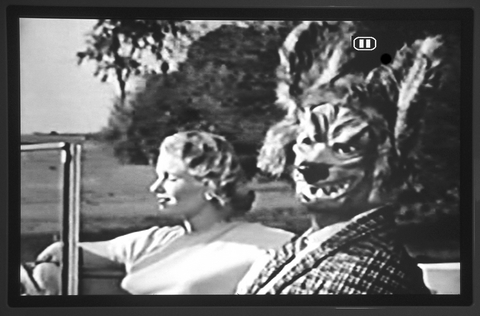
Image: Still from The Century of the Self, 2002
Thus, in a sense, the structure of Curtis' films separates out the functions of narrative and montage in their constitution of emphatic narrative totalities centring on singular ideas, individuals and elites. While looking for a way to understand his treatment of history and the form of Curtis' realism, one might think of these relations between text and image, montage and narrative as performing different operations: the archive and the spectacular character of the image produce complexity whilst the narrative text attempts to guarantee the sense of the whole and its relation to the facts. But thinking of this as an imbalanced realism, which might be quite promising, also begs consideration of the problematic things Curtis does with it.
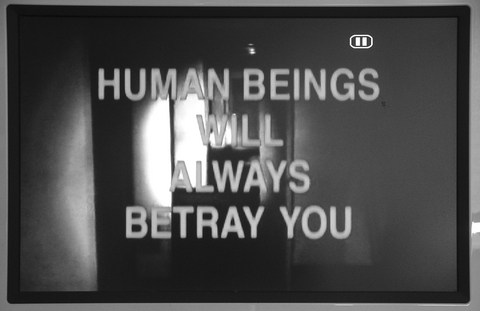
Image: Still from The Trap: What Happened to Our Dream of Freedom, 2007
The Trap: What Happened to Our Dream of Freedom is perhaps the most ambitious and, arguably, the most problematic of Curtis' post-2001 works. Conceptually and formally it builds upon the earlier series and makes more emphatic their tendency to crude generalisation. Starting from a consideration of Freidrich Hayek's political philosophy, The Trap attempts to establish an intimate duality. Curtis explores, on the one hand, the RAND Corporation and John Nash's development of the distinctly paranoid paradigm of Game Theory - here, an embrace of the Cold War logic of Mutually Assured Destruction extended to describe human behaviour - and, on the other, the claim that this desperate logic found social confirmation in R.D. Laing's adoption of a similar framework to describe the family as the destructive site for the production of mental illness. A set of wide ranging (sometimes dubious) conceptual connections allows Curtis to chart the application of management theories, based on Game Theory's core notion of selfishness, to most areas of public life. He frames this in terms of Isaiah Berlin's opposition between positive and negative notions of freedom; the former being a seductive utopian projection of ideals that are taken to lead inevitably to terror and repression, and the latter, defined in opposition to this, as a limited notion of freedom expressed in the minimal organisation of society to facilitate indulgence of personal desires.
In this framework, the anti-institutional celebration of individualism in '60s and '70s culture is described as dovetailing neatly with the formal abstractions and modes of self-interest characteristic of forms of social administration inspired by Game Theory.ix That, in this process, politics has become management means, for Curtis, that negative freedom has been realised in dystopian form. The film ends with a plaintive call for a political imaginary that strives to be positive in Berlin's sense but without producing repression. This plea is contradictory as the preceding episodes accept at face value Berlin's assertion of the impossibility of realising this desire. Insofar as it is a reprise of the central themes and conclusions outlined in the earlier series, The Trap reveals all three films to be melancholically structured around a notion of the dissolution of political agency, but they make little attempt to describe what the conditions of (or the precedents for) such agency might be, that is, not until near the end of each series where the value of politics and subjectivity have apparently been dissolved. Ultimately, The Trap is structured by a pessimism that concedes the 20th century to those who want the world to have realised itself according to Berlin's anti-speculative paradigm.
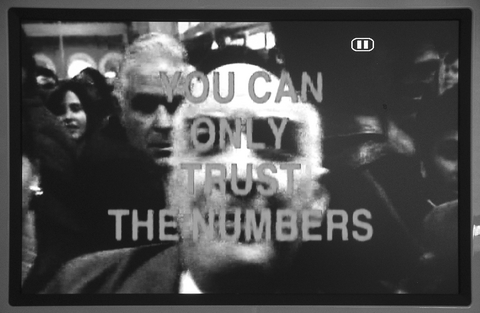
Image: Still from The Trap: What Happened to Our Dream of Freedom, 2007
Curtis' works have provoked considerable debate, ranging from their rejection as conspiracy theory by conservative commentators to left wing celebrations of their criticism of neoconservatism.x What links and motivates these responses is the idea that his films are political, but this understandable assumption is not as straightforward as it might seem. For instance, The Power of Nightmares' reception by the left needs to be questioned given that Curtis' reconstruction of the pre-his- tory of the War on Terror offers, in the end, most sympathy to Henry Kissinger's brutal political pragmatism.xi Curtis has repeatedly distanced himself from the idea that his aims are political, as in the following contrast he made in 2004: ‘[Michael Moore's] purpose is avowedly political. My hope is that you won't be able to tell what my politics are.'xii Albeit quite casually, this contrast echoes a familiar and intransigent dilemma facing left culture: whether to aim at a better conception of the past or a more forcefully desired future as the structuring principle of one's intellectual labours. Whilst Curtis' films do resonate with many of the political left's concerns (for instance, privatisation and neoliberalism, networked organisation, capitalism's obsession with risk and security, identity politics and the authoritarian personality), the interest of his engagement with these themes is undercut by the claim that his project isn't political. But this claim cannot simply separate politics from the meaning of Curtis' films. Rather, it gives a clue to their diffuse political character. For one thing, it entails accepting the idea of the separation of political agency from the institutions and processes the films narrate and ostensibly oppose, which is disingenuous. For another, it disappoints the more critically interesting moments his approach has produced.
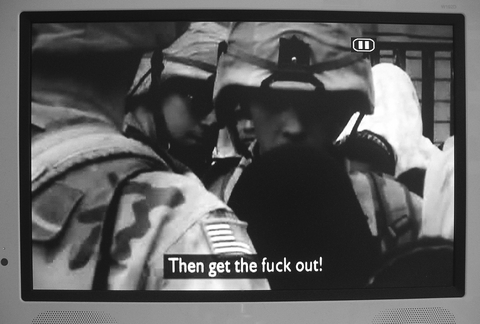
Image: Still from The Trap: What Happened to Our Dreams of Freedom, 2007
There's a passage in The Power of Nightmares that relates the story of a widely reported ‘terror alert' in 2002 that resulted from the CIA's and FBI's ‘debriefing' of Abu Zubaida (apparent operations chief of al-Qaeda) and his vague descriptions of plans to attack New York that were inspired by the 1998 remake of the film, Godzilla. Curtis' treatment of this odd story is interesting. He narrates it as an instance of the co-dependent and mythical projections of an ‘evil other' that are, significantly, mediated in the globally disseminated American remake of this film (an already heavily coded Japanese fantasy of nuclear destruction, in which previous myths, and realities, of evil and otherness lie sedimented). Against this story are set a sequence of images: broadcast news reconstructions of anti-terror police in action against pictures of slack jawed television audiences; a Guantanamo inmate against the dated special effects of an old Aladdin movie; Godzilla causing havoc on the streets of New York against a White House spokesman relating the news of Zubaida's threat to an alarmed press corps. Those who ridicule this film for its claim that the key figures in the War on Terror are made up (and those who take it to be straightforwardly realistic) might look again at this sequence to note the way it builds on the exaggeration, duplicity and cynicism of such layering of myth upon myth and the way that this amounts to what one might call a speculative image that adopts such a form as a way of making concrete the truth of an actuality that is highly ambiguous. Such moments are occasionally achieved in Curtis' films. Unfortunately, they have to be critically excavated from a framework that seems all too happy to accept his religious and conservative interviewees' assertions that speculative (utopian and idealist) thought is doomed. Curtis' films are caught in a liberal dilemma which views speculation as a positive (‘big ideas' form the core of all his films) but believes this value to be obsolete in a world taken to be correctly described by those whose interests are served by the erasure of an ability to imagine things otherwise. There are different qualitative moments of speculation in these films. Sometimes these lie in what Curtis says (e.g., his plea for a renewed politics in The Trap) and sometimes in his construction of complex images (as in the Godzilla sequence). I think the pessimism of the former is best thought separately from the promise of the latter.
Andrew Fisher <hss02af AT gold.ac.uk> is an artist and writer who lectures in the Visual Cultures Department of Goldsmiths College, University of London
Footnotes
i Adam Curtis interviewed by Andrew Orlowski for The Register, 20 November 2007, at, http://www.theregister.co.uk/2007/11/20/adam_curtis_interview/page6.html
ii After earning his journalistic stripes (presumably sourcing talking dogs) for Esther Rantzen's That's Life! in the '80s, Curtis went on to produce a number of documentary series for the BBC, including Pandora's Box (1992) and The Living Dead (1995). It is in the account in The Mayfair Set (1999) of a small elite of ‘buccaneer' businessmen and their influence on the development of Thatcherism that his characteristic approach to documentary narrative took shape and
this has been consolidated in subsequent series.
iii See ‘It becomes a self-fulfilling thing: Adam Curtis talks with Errol Morris' at, http://errolmorris.com/content/interview/beleiver0406.html
iv For instance, see his comments in conversation with Morris: ‘I'm very suspicious of this idea of a balanced version of history. All history is construction often by the powerful. What I do is construct an imaginative interpretation of history to make people look again at what they know. [...] Because I think that so much of this interpretation of events is a deadening repetition agreed upon by certain people, a sort of collectivity of news reports.' Ibid.
v Guy Debord, The Society of the Spectacle (1967), trans. Donald Nicholson-Smith, New York: Zone Books, 1995, Thesis 1, p.12.
vi Quoted by Tim Adams in ‘The Exorcist', Observer, Sunday October 24, 2004 at, http://observer.guardian.co.uk
vii See, George Lukács, ‘Realism in the Balance', in Ernst Bloch, et al., Aesthetics and Politics, ed. Ronald Taylor, London: New Left Books, 1977, pp.28-67.
viii See, for instance, George Lukács, ‘The Intellectual Physiognomy in Characterisation', in Writer and Critic and Other Essays, ed. & trans. Arthur Kahn, London: Merlin Press, 1978, pp.149-88.
ix This formulation draws closely on Brian Holmes' discussion of the films in question here. See, ‘Neolib Goes Neocon: Adam Curtis, or Cultural Critique in the 21st Century' at, http://www.nettime.org/ListsArchives/nettime-1-0706/msg00047.html
x A sense of the range of critical responses to Curtis' work can be gained by looking at the following selection: ‘The Making of the Terror Myth', Andy Beckett, The Guardian, Friday, 15 October 2004, at, http://www.guardian.co.uk/media/2004/oct/15/broadcasting.bbc; Clive Davis, ‘The Power of Bad Television: The BBC's Bizarre New Documentary on Terrorism and Neoconservatism', National Review, 21 October 2004, at, http://nationalreview.com/comment/davis200410211043.asp; ‘Beware the Holy War: The Power of Nightmares', Peter Bergen, The Nation, 20 June 2005, at, http://www.thenation.com/doc/20050620/bergen; Kenneth Minogue on The Trap at, http://www.socialaffairsunit.org.uk/blog/archives/001440.php ; ‘Cry Freedom', Oliver Burkeman, The Guardian, Saturday, 3 March 2007, at, http://www.guardian.co.uk/media/2007/mar/03/broadcasting; ‘The Trap', Anindya Bhattacharyya, 10 March 2007, Socialist Worker Online, issue 2041 at http://www.socialistworker.co.uk/article.phparticle_id=10878; David Black's review of The Trap, 10 June 2007, at, http://www.thehobgoblin.co.uk/journal/h92007_db_trap.html
xi See Curtis' comments to this effect in the conversation with Morris referenced above.
xii Quoted by Andy Beckett in The Making of the Terror Myth, op. cit.
Mute Books Orders
For Mute Books distribution contact Anagram Books
contact@anagrambooks.com
For online purchases visit anagrambooks.com


